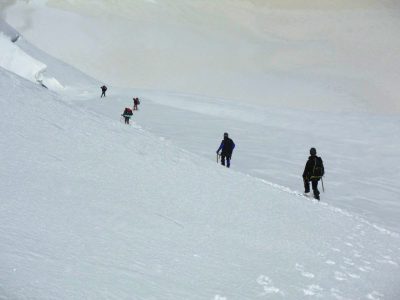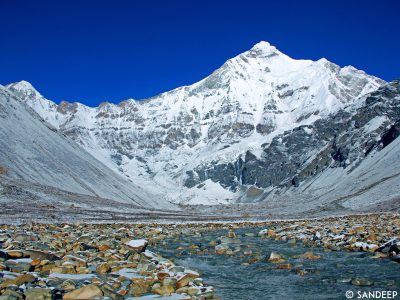Welcome to our comprehensive guide that aims to answer a common question among adventurous souls: “How difficult is Hampta Pass Trek?”. If you’re a trekking enthusiast or someone who’s looking to step into the exciting world of high-altitude treks, this blog post is for you.
Nestled in the beautiful landscape of Himachal Pradesh in India, the Hampta Pass trek stands as a cherished journey for every hiker. This easy-level trek is a perfect blend of diverse terrains, captivating landscapes, and thrilling challenges. It takes you through verdant forests, open green pastures, glacial valleys, and over a high-altitude pass, offering an unforgettable experience.
The trek is named after the Hampta Pass located in the Kullu valley and serves as a bridge between the Kullu and Lahaul valleys. With its highest point standing at an impressive altitude of 14,000 feet, it promises breathtaking views of the Himalayan ranges and a sense of accomplishment that’s hard to match.
But the question remains, how difficult is Hampta Pass Trek? In this blog, we delve into understanding the difficulty level of this popular trek, what it takes to conquer it, and tips on how to prepare effectively. Whether you’re a seasoned trekker or a novice, this guide will provide valuable insights to help you navigate the Hampta Pass trek with confidence and safety.
Let’s begin our journey!
Location and Altitude of Hampta Pass
Hampta Pass is situated in the Indian state of Himachal Pradesh, within the majestic Pir Panjal range of the Himalayas. The trek begins from the lush green Kullu Valley and takes you through an awe-inspiring journey to the barren landscape of Lahaul. The highest point of the trek, the Hampta Pass, stands tall at an altitude of approximately 14,000 feet or 4,270 meters.
Best Time to Visit and Weather Conditions to Expect
The best time to undertake the Hampta Pass Trek is from mid-June to mid-October. During these months, the weather conditions are relatively stable and you can fully enjoy the mesmerizing beauty of the landscape. The temperature during the day hovers around 12-20°C, while at night it can drop to -2 to 6°C. However, it’s important to note that the weather in high-altitude areas can be unpredictable, so trekkers should be prepared for sudden changes.
In the monsoon season (July-August), the region receives heavy rainfall, making the trek more challenging due to slippery trails and the risk of landslides. Hence, it is generally advised to avoid this period. In the winter months (November to February), the pass is often closed due to heavy snowfall.
Significance of Hampta Pass in the Trekking Community
Hampta Pass holds a special place in the hearts of the trekking community. Its unique topography, which transitions from the lush green landscapes of the Kullu Valley to the stark deserts of Lahaul, offers a diverse and enriching trekking experience. The trek is often seen as a stepping stone for those looking to graduate from easy to moderate-level treks.
Moreover, the Hampta Pass trek is renowned for its breathtaking views of glacial valleys, open meadows, and towering peaks like Indrasan and Deo Tibba. It also serves as a gateway to the challenging trek to Chandratal Lake, another popular destination among avid trekkers. The sense of achievement upon reaching the pass, coupled with the natural beauty one encounters along the way, makes the Hampta Pass trek a must-do on every trekker’s bucket list.
The Difficulty Level of Hampta Pass Trek
The difficulty level of the Hampta Pass Trek is often classified as easy-moderate. However, it’s important to note that ‘easy’ doesn’t mean the trek is a walk in the park. It simply means that with the right preparation and mindset, it is achievable for most people, including beginners.
Factors Contributing to the Difficulty Level
Altitude: The Hampta Pass stands at an altitude of 14,000 feet. While this is not extremely high compared to some of the other Himalayan treks, the rapid gain in elevation can pose challenges, particularly altitude sickness.
Terrain: The trek consists of multiple terrains – from verdant forests to rocky trails, steep climbs to river crossings. This variety can be physically demanding and requires a good level of fitness.
Weather: Weather conditions in high-altitude areas can be unpredictable and extreme. Trekkers should be prepared for sudden changes in weather, which can add to the difficulty level.
Distance: The total distance of the Hampta Pass Trek is approximately 35 kilometers, which is covered over a span of 4-5 days. While this is not exceptionally long, the cumulative effect of daily trekking can be strenuous.
Physical Fitness Required for the Trek
Given the factors mentioned above, a basic level of fitness is required for the Hampta Pass Trek. It’s recommended to engage in regular cardio exercises like running, cycling, or swimming for at least a month before the trek. Strength training, particularly for the legs and core, can also be beneficial.
Comparison with Other Similar Level Treks
Compared to other similar-level treks, the Hampta Pass Trek is considered one of the more accessible ones. For instance, the Roopkund Trek, a moderate-level trek, is more challenging due to its higher altitude (approximately 16,500 feet) and harsher weather conditions. On the other hand, the Valley of Flowers Trek, also rated as easy, is easier due to its lower altitude (around 12,100 feet) and shorter distance.
While the Hampta Pass Trek does pose challenges, its unique blend of diverse terrains, stunning landscapes, and manageable difficulty level makes it an excellent choice for both seasoned trekkers and beginners looking to step up their game.
Preparation and Training for Hampta Pass Trek
Fitness Regime:
- Cardiovascular Training: Engage in cardio exercises like running, cycling, or swimming for at least 30 minutes daily, 4-5 times a week. This helps build stamina and endurance.
- Strength Training: Incorporate strength training exercises into your routine, particularly focusing on the legs and core muscles. Squats, lunges, and planks are some effective exercises.
- Flexibility Exercises: Regular stretching and yoga can improve flexibility and balance, reducing the risk of injuries during the trek.
Mental Preparation:
- Research: Gather as much information as you can about the trek – the route, weather conditions, challenges, etc. This will help you set realistic expectations and prepare mentally.
- Positive Mindset: Maintaining a positive attitude, even when faced with challenges, can significantly impact your trekking experience.
- Patience: Trekking is not a race. It’s important to pace yourself, enjoy the journey, and listen to your body.
Acclimatization:
- Importance: Acclimatization is crucial in high-altitude treks like Hampta Pass to prevent Acute Mountain Sickness (AMS). Spend a day or two in Manali (the starting point of the trek) or any other high-altitude area before the trek to allow your body to adjust to the decreased oxygen levels.
- Hydrate: Drink plenty of water during the acclimatization period and the trek.
Tips and Suggestions for a Successful Hampta Pass Trek
Packing Essentials:
- Clothing: Carry thermal wear, waterproof jackets, trekking pants, woolen caps, gloves, and scarves. Layering is key to handling varying temperatures.
- Footwear: Invest in a good pair of waterproof trekking shoes with a strong grip and ankle support.
- Accessories: Sunglasses, sunscreen, water bottles, headlamps, insect repellent, and a first-aid kit are essential.
- Gear: Depending on your trek’s arrangement, you might need to carry tents, sleeping bags, and cooking equipment.
Dos and Don’ts:
- Do acclimatize before starting the trek.
- Don’t litter. Carry all waste back with you.
- Do stay hydrated and eat well to maintain energy levels.
- Don’t ignore any signs of altitude sickness.
Emergency Contact and Safety Measures:
- In case of emergency, contact the local authorities or the nearest medical center. The Manali helpline number is 108.
- Always inform someone about your trekking plan and expected return date.
- It’s advisable to have travel insurance that covers high-altitude trekking.
Remember, preparation is key to a successful and enjoyable trekking experience.
Conclusion
The Hampta Pass Trek, while categorized as easy, is a thrilling adventure that requires careful preparation. Factors like altitude, terrain, weather, and distance add to its challenge. A well-planned fitness regime, development of essential skills, mental readiness, and proper acclimatization are key to successfully completing this trek.
Remember to pack wisely, respect nature, and take safety measures seriously. The journey might be demanding, but with the right preparation, it’s an achievable and rewarding experience. If you feel prepared, don’t hesitate to take up this challenge.
The breathtaking beauty of Hampta Pass awaits you!




